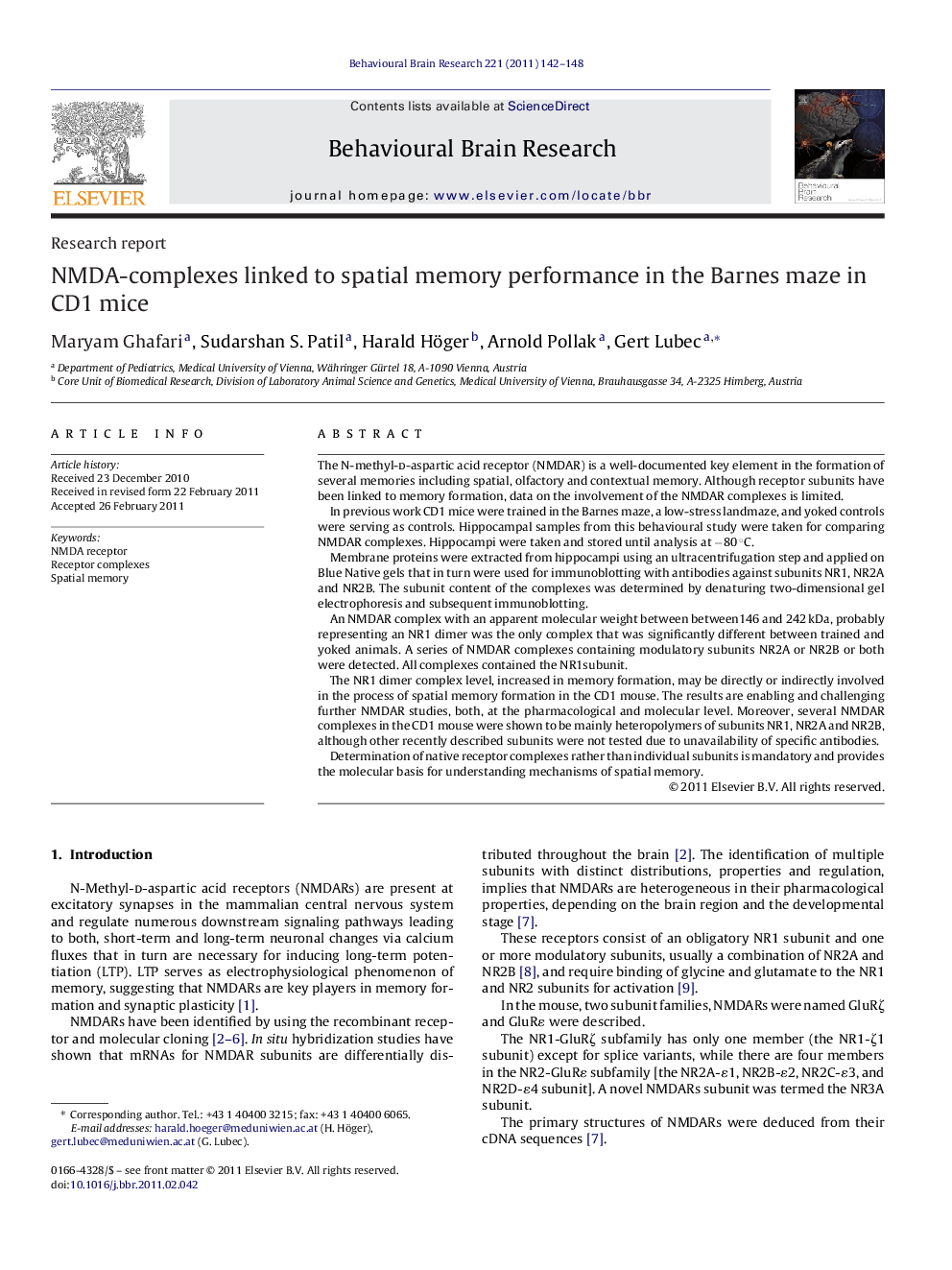| کد مقاله | کد نشریه | سال انتشار | مقاله انگلیسی | نسخه تمام متن |
|---|---|---|---|---|
| 4313685 | 1290006 | 2011 | 7 صفحه PDF | دانلود رایگان |

The N-methyl-d-aspartic acid receptor (NMDAR) is a well-documented key element in the formation of several memories including spatial, olfactory and contextual memory. Although receptor subunits have been linked to memory formation, data on the involvement of the NMDAR complexes is limited.In previous work CD1 mice were trained in the Barnes maze, a low-stress landmaze, and yoked controls were serving as controls. Hippocampal samples from this behavioural study were taken for comparing NMDAR complexes. Hippocampi were taken and stored until analysis at −80 °C.Membrane proteins were extracted from hippocampi using an ultracentrifugation step and applied on Blue Native gels that in turn were used for immunoblotting with antibodies against subunits NR1, NR2A and NR2B. The subunit content of the complexes was determined by denaturing two-dimensional gel electrophoresis and subsequent immunoblotting.An NMDAR complex with an apparent molecular weight between between146 and 242 kDa, probably representing an NR1 dimer was the only complex that was significantly different between trained and yoked animals. A series of NMDAR complexes containing modulatory subunits NR2A or NR2B or both were detected. All complexes contained the NR1subunit.The NR1 dimer complex level, increased in memory formation, may be directly or indirectly involved in the process of spatial memory formation in the CD1 mouse. The results are enabling and challenging further NMDAR studies, both, at the pharmacological and molecular level. Moreover, several NMDAR complexes in the CD1 mouse were shown to be mainly heteropolymers of subunits NR1, NR2A and NR2B, although other recently described subunits were not tested due to unavailability of specific antibodies.Determination of native receptor complexes rather than individual subunits is mandatory and provides the molecular basis for understanding mechanisms of spatial memory.
An NMDA complex containing the NR1 subunit was significantly higher in mice trained in the Barnes Maze (learning where to escape from light and the aversive sound of a buzzer) as compared to yoked controls (blocked exit to escape box).Figure optionsDownload high-quality image (134 K)Download as PowerPoint slideHighlights
► NMDAR complex containing NR1-significantly different between trained/yoked animals.
► The composition of subunits NR1, NR2A and NR2B was shown in NMDA receptor complexes.
► The use of BN gel immunoblotting to study native protein complexes.
Journal: Behavioural Brain Research - Volume 221, Issue 1, 1 August 2011, Pages 142–148